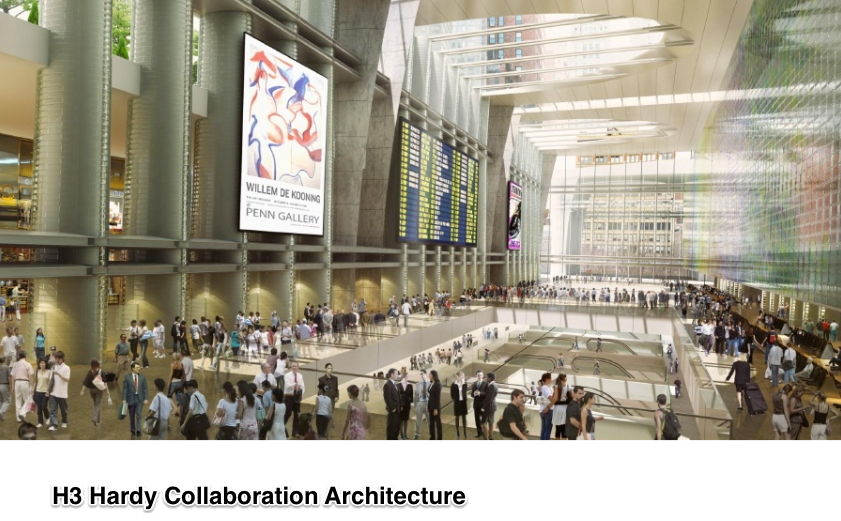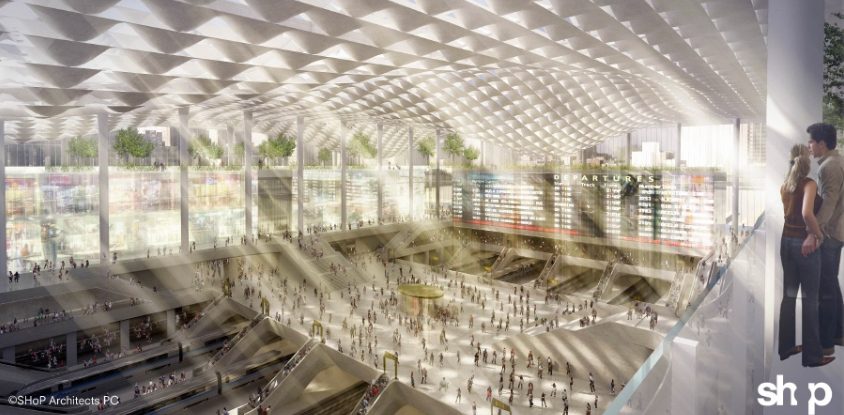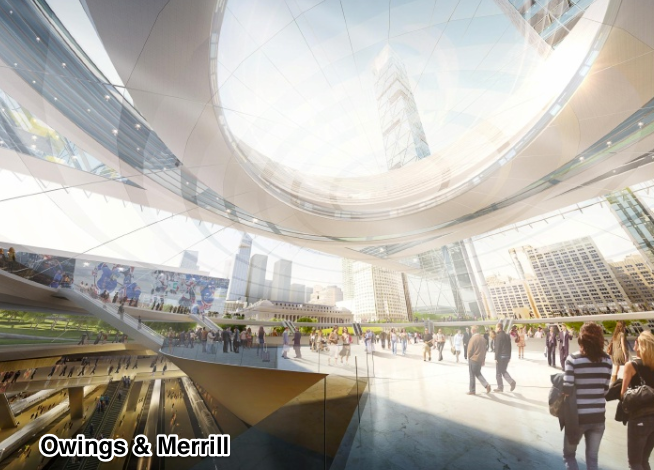The Old Penn Station: 1910-1963
“Any city gets what it admires, will pay for, and, ultimately deserves. Even when we had Penn Station, we couldn’t afford to keep it clean. We want and deserve tin-can architecture in a tin-horn culture. And we will probably be judged not by the monuments we build but by those we have destroyed.”
--Ada Louise Huxtable
Most people don't realize that New York's Pennsylvania Station wasn't always the subterranean labyrinth of cramped tunnels that we know today. For nearly fifty-three years it was an awe-inspiring example of Beaux-Arts architecture defined by its majestic Main Waiting Room and stunning glass-roofed train shed. It was a station that dwarfed any other in the world. Completed in 1910 by McKim, Mead and White, Penn Station was modeled after some of history's greatest structures including the Roman Baths of Caracalla and Berlin's Brandenburg Gates. It was described by historian Jill Jonnes as "a great Doric temple to transportation." Covering over 7 acres of land, it was the largest indoor space in New York City and one of the largest indoor public areas in the world.
As the Interstate Highway System took hold and a litany of financial troubles plagued the Pennsylvania Railroad it became necessary for the company to sell Penn Station's air rights in the 1950's. By the early 1960's plans were announced to build a modern office building, Penn Plaza, and sports arena, Madison Square Garden. After a three year demolition, Penn Station was cut down to 3/4 its size and forced completely underground. Most of the station's remains were dumped in the New Jersey Meadowlands where it was used as swamp filler for an industrial park.
“Until the first blow fell, no one was convinced that Penn Station really would be demolished, or that New York would permit this monumental act of vandalism against one of the largest and finest landmarks of its age of Roman elegance.”
Current Penn Station
A New Penn Station
Image courtesy of SOM via MASNYC.org
Anyone who travels to and from New York by rail knows that the current Penn Station is not equipped to accommodate the 600,000 commuters who flow through its cramped tunnels everyday. Since Penn Station is anchored to its current location, upgrades need to be made where it is so the station can meet the needs of future train travel. According to the Municipal Arts Society of New York:
Penn Station can’t be moved, because it is linked to a vast network of tracks and other infrastructure that run below the station. Yet its location beneath Madison Square Garden means it would be nearly impossible to bring substantial light, air and space into the existing facility.... Penn Station’s problems aren’t only aesthetic. The station is so space-constrained that it struggles to accommodate passenger traffic from the rail systems that currently use it or absorb future passenger growth and new services such as high-speed rail.
In April of 2013 the MASNYC called for some of the nation's top architectural design firms to put out their visions of a newly designed Penn Station. By the end of May, H3 Hardy Collaboration Architecture, Diller, Scofidio & Renfro, SHoP Architects and Owings and Merrill responded with some innovative and inspirational ideas. Click on the links above to see the complete proposals or click through the gallery below to see a sample image from each firm.
This video from the MASNYC explains the urgent need for a new Penn Station:
In July of 2013 the advocates for a better Penn Station were awarded a victory when the city council voted to limit Madison Square Garden's operating permit to only 10 years.
In January 2016, soon after our engagement at Theatre Row ended, Governor Andrew Cuomo, announced plans for a re-imagined Penn Station in his Empire Station Plan. The project received its first funding commitment in August 2016 with Vice-President Joe Biden announcing a $2.45 billion federal loan to Amtrak to assist with the purchase of new Acela trains and infrastructure improvements for the Northeast Corridor, including the anticipated NYC project.
In conjunction with Untapped Cities, the producers of The Eternal Space will produce two public events in fall 2016 timed around the 52nd demolition anniversary. Capturing Penn Station will be held at the NY Transit Museum in downtown Brooklyn on October 25th at 6:30 PM. The event will feature a panel discussion of the importance of Penn Station past in shaping the future plans. A Public Summit for The Future of Penn Station will be held in the Great Hall of Cooper Union on November 2nd at 7:00 PM. More information about the event including ticketing information and panelist biographies can be found at pennstationconversation.com









